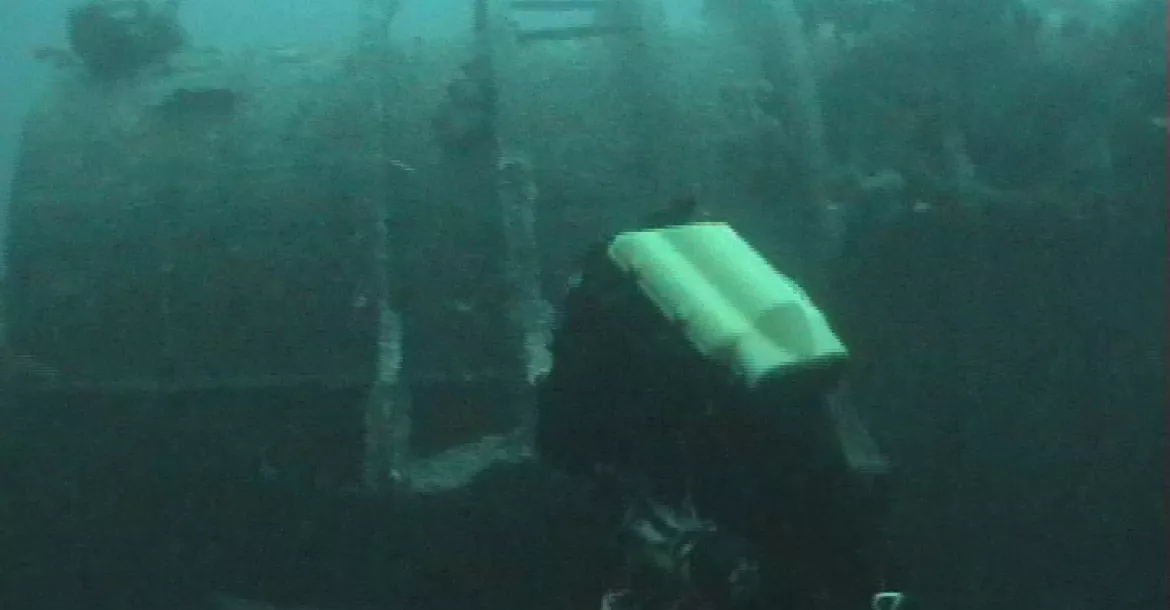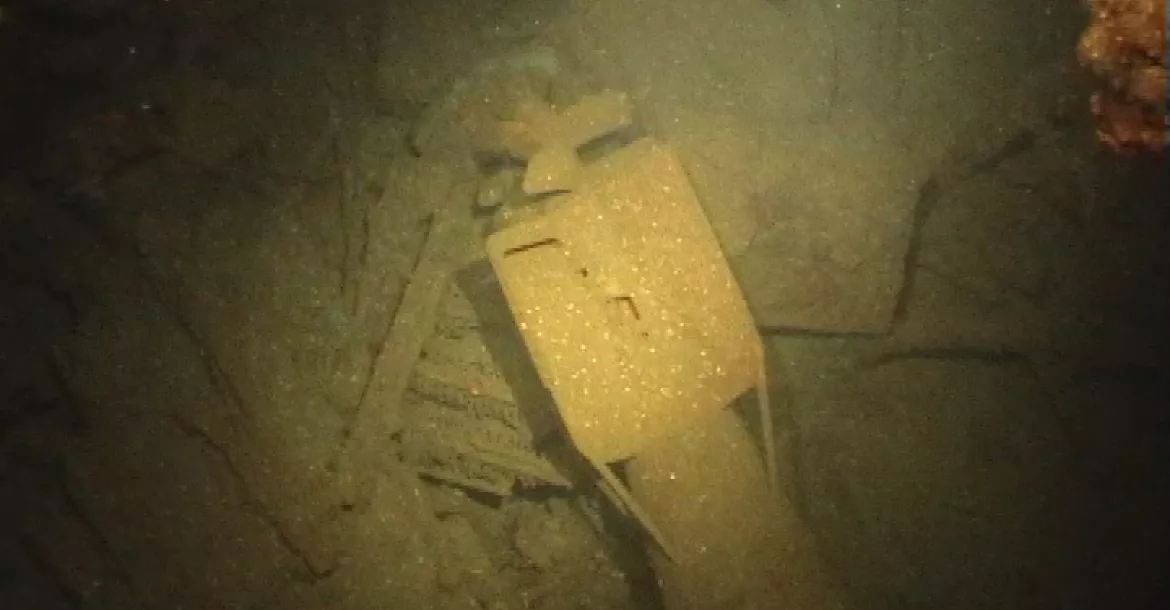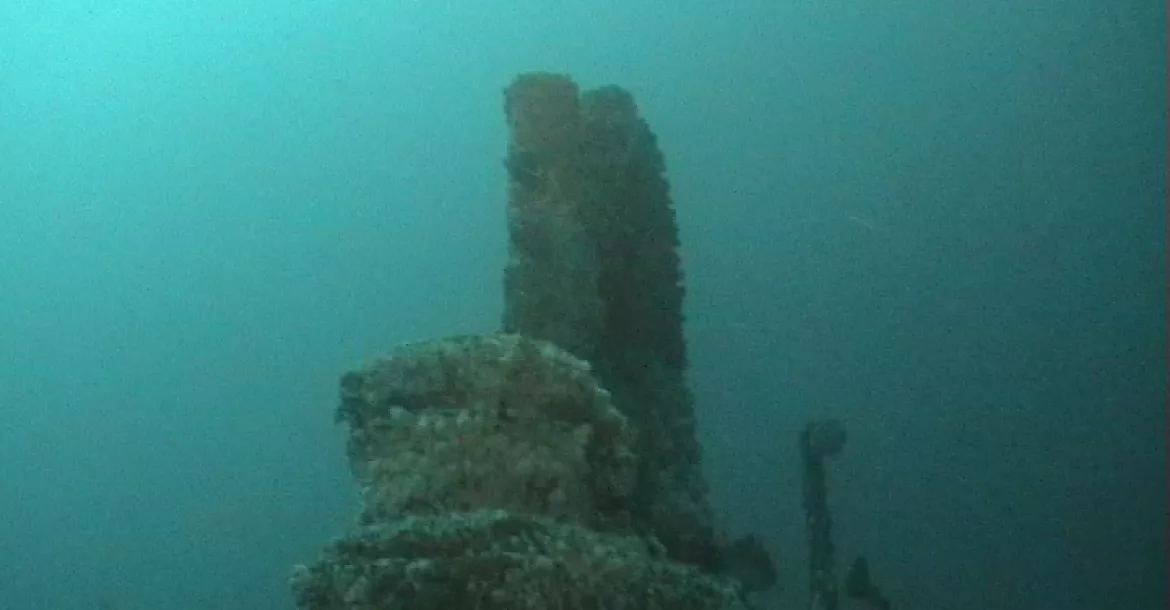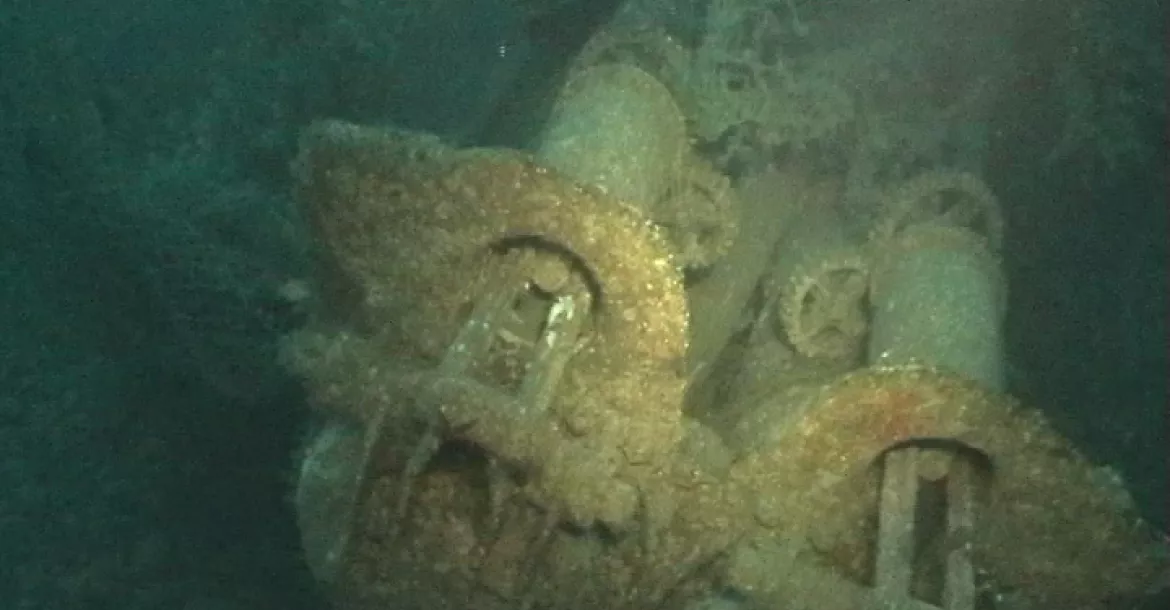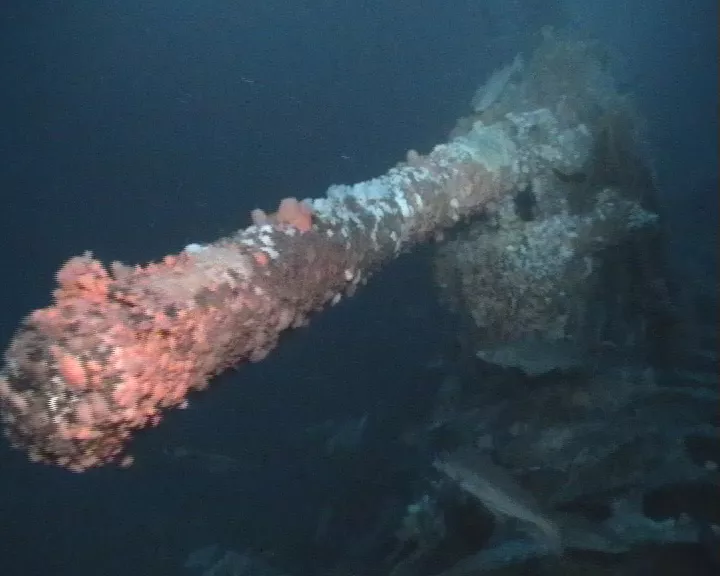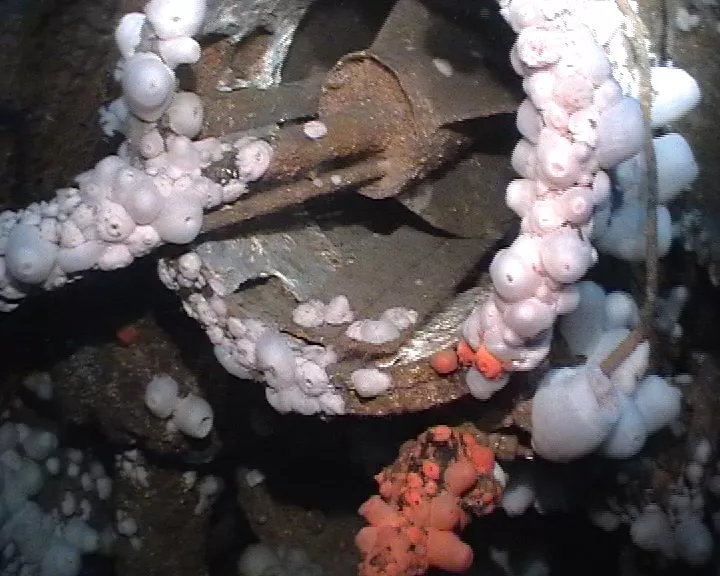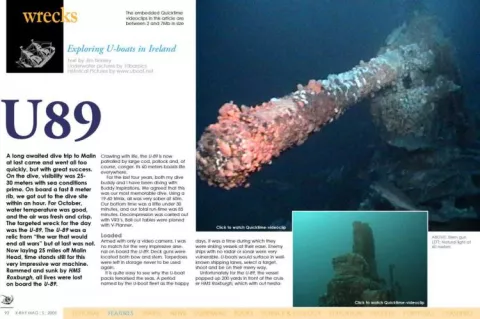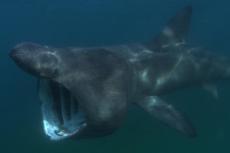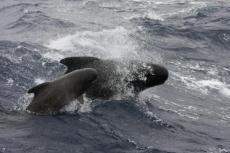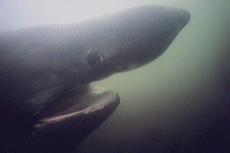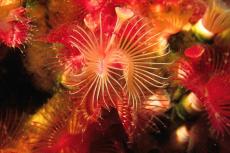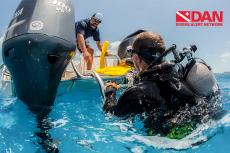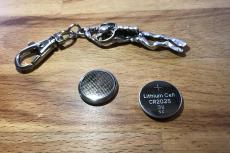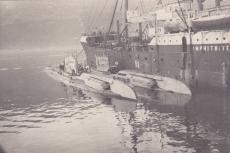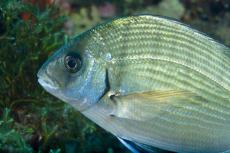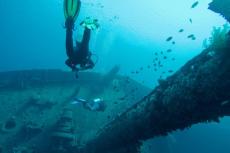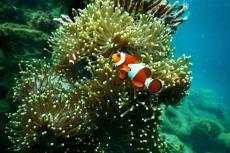Now laying 25 miles off Malin Head, time stands still for this very impressive war machine. Rammed and sunk by HMS Roxburgh, all lives were lost on board the U-89. Crawling with life, the U-89 is now patrolled by large cod, pollock and, of course, conger. Its 60 meters boasts life everywhere.
Contributed by
For the last four years, both my dive buddy and I have been diving with Buddy Inspirations. We agreed that this was our most memorable dive. Using a 19-60 trimix, all was very sober at 60m. Our bottom time was a little under 30 minutes, and our total run-time was 85 minutes. Decompression was carried out with VR3’s.
Bail out tables were planed with V-Planner.
Loaded
Armed with only a video camera, I was no match for the very impressive arsenal on board the U-89. Deck guns were located both bow and stern. Torpedoes were left in storage never to be used again.
It is quite easy to see why the U-boat packs terrorised the seas. A period named by the U-boat fleet as the happy days, it was a time during which they were sinking vessels at their ease. Enemy ships with no radar or sonar were very vulnerable. U-boats would surface in well-known shipping lanes, select a target, shoot and be on their merry way.
Unfortunately for the U-89, the vessel popped up 200 yards in front of the cruiser HMS Roxburgh, which with out hesitation, rammed U-89’s conning tower. Soon after, explosions were heard.
German voices were also heard amongst the waves. U-89 was sunk with the loss of all their lives. So, out of respect for the dead, the only souvenirs I took were in the format of pictures to share with all. The rest was left to the memory of the many souls lost regardless of personal beliefs about the war – who was right and who was wrong.
Close quarters
Most of us have seen the film Das Boot and can picture how claustrophobic and cramped it was on board the vessel. As big and impressive as the U-89 was, it was still daunting to look inside a hatch and imagine that men used to sleep, work and fight in those conditions and sometimes survive.
They knew their chances for survival were low. Even if you did survive a battle and make it to the surface, it was most likely instant execution for you. One was most likely shot in the water. Such instances have been reported after the sinking of the Lusitania. No doubt the action was revenge for the sinking of the Lusitania by a comrade U-boat, U-20.
Inside history
As I investigated further into the U-boats’ history and talked to islanders with memories of the past from the South and West coasts of Ireland, I learned how U-boats and Allied boats would come to the islands to trade for provisions. In doing so, unwritten rules of war were made where momentary cease fires occurred in order for both sides to gain supplies.
Sir Roger David Casement (1864-1916), the British traitor and Irish nationalist hero who was hanged by the British in mid-1916 for his part in working with Germany and Irish nationalists in planning the Dublin Easter Rising of 1916 came back from Germany in a U-boat after arranging armaments for the 1916 Rising. There is no doubt that U-boats played a part in Irish history.
These wrecks are our underwater museums and should be treated with respect. U-89 offers layers of U-boat history to view. Open in some areas. Intact and in good condition in other areas. Don’t forget that this is a vessel that has been in the open sea for nearly a century. Peering at the wreck’s cross-section, it is as if you can see different levels of construction. (Take notes and build your own).
There were plenty more U-boats operating around Malin and all the coastal waters of Ireland at this time. The vessels, U-30, U-43, U-44, U-57, U-60 and the U-64, helped sink the Justicia. The vessels, U-68, U-70,U-73, U-79 and the U-80, laid mines in Lough Swilly and caused the sinking of the Laurentic. The vessels, U-94, U-95, U-107 and the U-45, lie offshore near Donegal.
UB-82 lies off Rathlin Island. UB-85 lies in Belfast Lough. U-110 lies off Malin Head. U-124, which also helped sink the Justicia, lies off the north coast of Donegal. UC-42 and UC-44 were sunk offshore at Cobh Co Cork. UB-65 lies near the Fastnet Rock. U-68 and UC-29 are located off the Coast of Kerry. U-83 lies offshore at Bullrock, Co Cork.
And that’s just the list for WWI. There are many more U-boats off the coast of Ireland from WWII with the highest number of wrecks off the coast of Malin identified by Operation Deadlight (www.operationdeadlight.co.uk), an expedition which was the first attempt by technical divers to survey and identify the wrecks of German U-Boats scuttled by the Allied forces after WWII in the waters north of Ireland. It was a scuttling of 42 plus U-boats. So, the next time you get in the water, it might not be a shark stalking you but a U-boat instead.
Malin matters
Malin offers excellent visibility. Relaxed atmosphere. Diving for all occasions, not just deep wrecks. There are shallow wrecks and all the scenic diving you could want.
The dive operator we choose with 100% satisfaction was Dive North (www.divenorth.com). Thanks to our host and guide, Geoff, we will be back for more.
But this was not the first time I have been to Donegal. I have had the pleasure of diving the Laurentic as part of the crew of Teilifis na Gaeilge (TnaG), Ireland’s Irish language TV channel, and I dived the Audacious, through the courtesy of the Inishowen and Derry Sub Aqua Clubs. I shall be back for more.
Malin also seems to be becoming a very popular destination for technical diving courses of all disciplines under the guidance of Gary Fox who comes to Malin to get good diving and pass on his experience through training and courses (www.diveaction.co.uk).■
For more information, visit: www.10barpics.com
www.uboat.net
Published in
-
X-Ray Mag #5
- Läs mer om X-Ray Mag #5
- Log in to post comments

